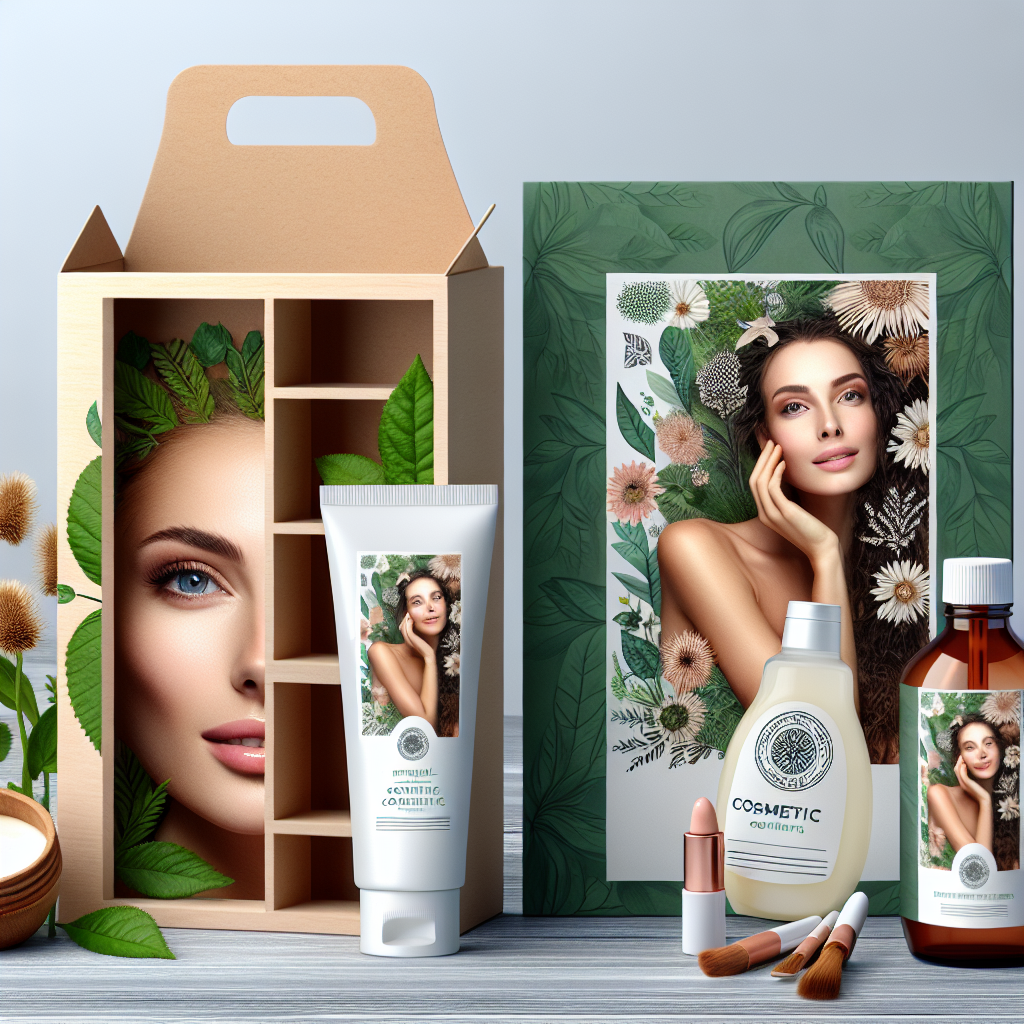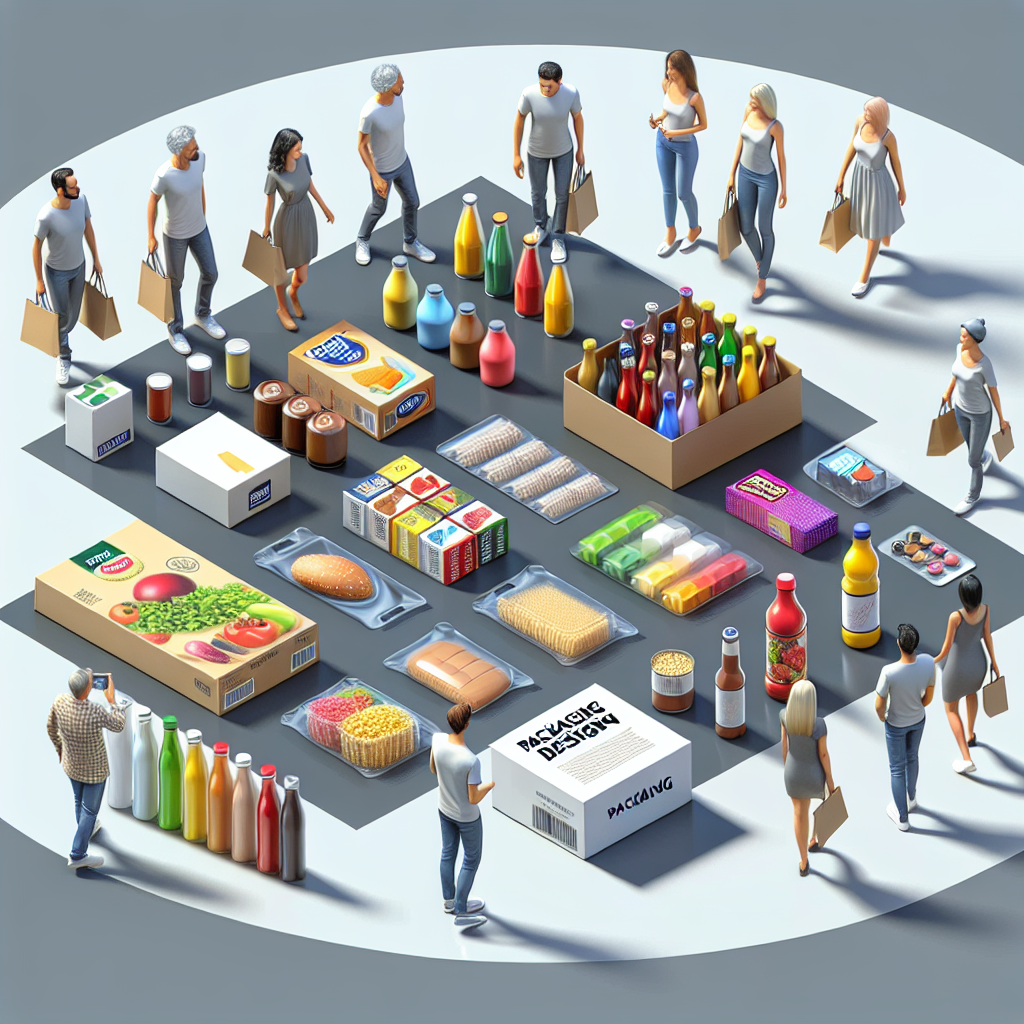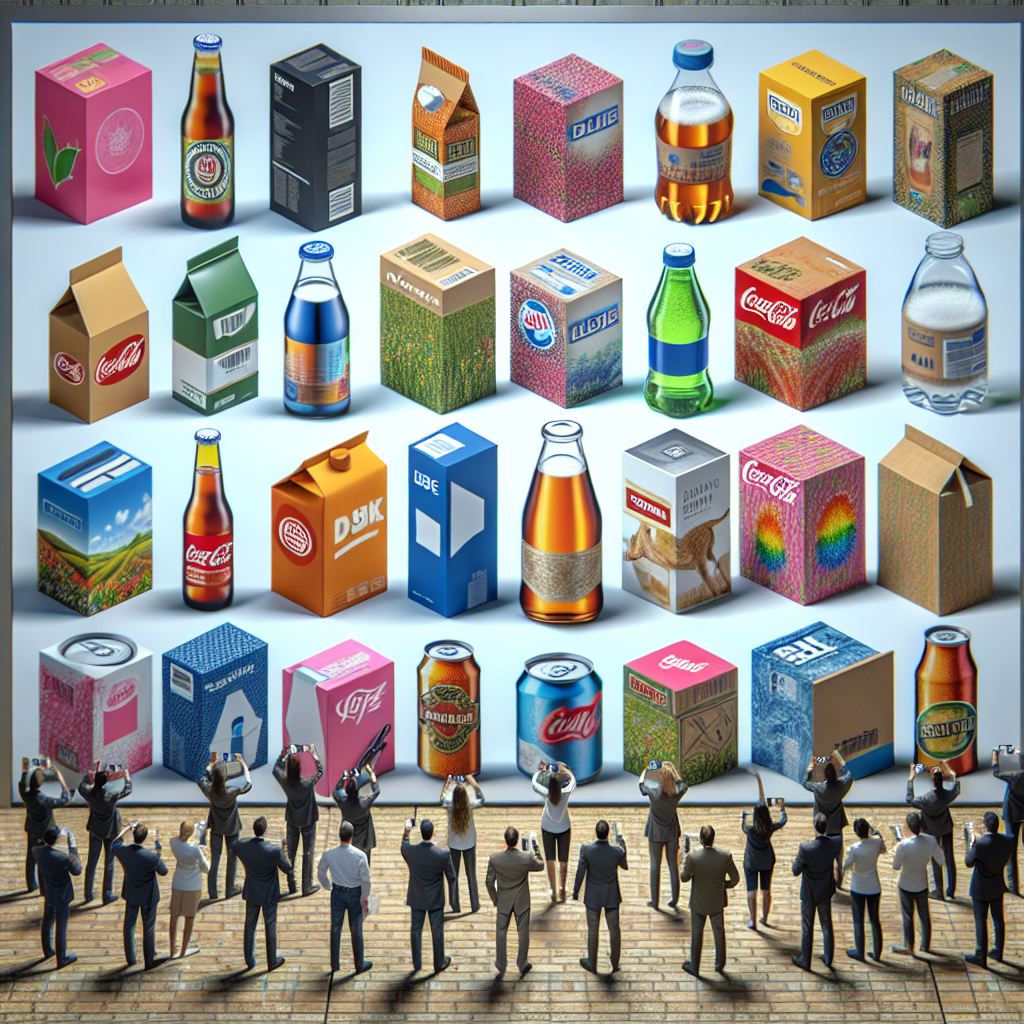Transform Your Product Vision: Packaging Design from Idea to Mockup
When it comes to bringing your product vision to life, packaging design from idea to mockup is a crucial step. Its not just about making a box look pretty; it’s about translating your brands message into a tangible form that captivates your audience from the moment they lay eyes on it. Imagine walking into a store and seeing your product stand out on the shelf, designed so beautifully that it practically invites the customer to pick it up. That’s the power of effective packaging design!
What Does Packaging Design Include?
Packaging design is a multi-faceted process that encompasses several critical aspects:
- Concept Development: Turning initial ideas into feasible designs.
- Materials Selection: Choosing the right materials that deliver quality and sustainability.
- Graphic Design: Creating logos and visuals that represent your brand’s essence.
- Prototyping: Developing mockups to visualize the final product and make necessary adjustments.
Each of these elements plays a vital role in how your product is perceived. For instance, Coca-Cola’s classic branding is instantly recognizable, thanks to its unique color scheme and logo — a fine example of effective creative packaging design.
How Does Packaging Design Affect Sales?
The connection between good packaging design and increased sales is undeniable. Studies show that well-designed packaging can boost sales by up to 30%! Why? Because appealing packaging grabs attention and builds trust. Think of it this way: if two products are identical in quality but one has eye-catching packaging while the other is plain, which one do you think will get sold more? Exactly!
Consider the story of a local organic skincare brand. Initially, their plain, unbranded containers didn’t sell well. After investing in a professional packaging redesign, they saw sales increase significantly within weeks. Customers were attracted to the new aesthetic, which communicated their values of nature and purity. ⭐ Attractive packages can not only draw in potential buyers but also keep them coming back for more!
Who is Involved in Developing Mockups?
The creation of mockups is a collaborative effort involving:
- Graphic Designers: These professionals bring visual concepts to life.
- Marketing Specialists: They provide insights into customer preferences.
- Product Developers: They ensure design feasibility and functionality.
- Brand Strategists: They help align the design with overall brand messaging.
Every mockup represents hours of teamwork and creativity, turning your product from just an idea into something real and market-ready. Everyone involved plays a part in ensuring the package isn’t just beautiful but also functional, leading to successful sales conversions.
Understanding the Costs of Packaging Design
You might be wondering, how much does it cost to develop packaging design? Well, the costs can vary based on complexity and scope. For example:
These costs reflect a professional service capable of ensuring your packaging not only looks appealing but functions perfectly in logistics and sales channels. So investing in quality packaging design can significantly impact your product’s success. ⭐
Interested in transforming your product vision into stunning packaging? Call us today at +373 601 066 66, or send us a message on our website webmaster.md. Our experienced team, led by our customer relations manager Arsenii, is ready to help you every step of the way!
FAQs about Packaging Design from Idea to Mockup
- What is the first step in packaging design? The first step is conducting market research to understand your audience and competition.
- How long does the packaging design process take? Typically, it can take anywhere from 2 weeks to several months, depending on the complexity of the design.
- Can I create my packaging design? While you can create your own design, working with professionals often yields the best results.
- What influences the cost of packaging design? Factors include complexity, materials, and whether you’re using a freelance designer or an agency.
- Are there specific regulations for packaging? Yes, regulations vary by industry and region, affecting everything from labeling to safety standards.
- How often should packaging be redesigned? It’s wise to reevaluate your packaging design every 3-5 years or whenever there’s a shift in market trends.
- Is sustainable packaging important? Absolutely! Eco-friendly packaging can enhance your brand image and appeal to environmentally conscious consumers.
- What software is commonly used for packaging design? Popular options include Adobe Illustrator, Photoshop, and 3D modeling software.
- Can packaging design affect consumer perception? Yes, well-designed packaging greatly influences consumer perceptions and can elevate your brand.
- What are some examples of creative packaging design? Unique bottle shapes, interactive elements, and reusable packaging are all examples that stand out.
What Does Packaging Design Include? Unpacking the Essentials for Success
When it comes to packaging design, many might think its just about aesthetics. However, packaging design covers various crucial elements that collectively ensure your product stands out and sells effectively. Understanding what goes into packaging design is essential for any business looking to make a mark in the market. Let’s unpack the essentials! ⭐
The Core Components of Packaging Design
At its core, packaging design includes:
- Functionality: First and foremost, packaging must protect the product. Think about a fragile glass bottle of wine—its packaging must safeguard it not just from damage but from contamination as well.
- Aesthetics: This is the visual impact. Does your packaging attract attention? For instance, the brightly colored packaging of M&M’s is memorable and instantly recognizable, signaling fun and joy.
- Branding: Effective packaging communicates your brand identity. A coffee company might use earthy tones and organic materials to convey quality and sustainability. This alignment helps develop consumer trust and loyalty.
- Information: Your package needs to convey essential information. This could include ingredients, usage instructions, and health claims. Proper labeling not only meets regulations but also helps customers make informed decisions.
- Sustainability: Nowadays, eco-friendly packaging is not just a trend; it’s a necessity. Brands like Coca-Cola are investing in sustainable packaging to appeal to environmentally conscious consumers. ⭐
- Cost-Effectiveness: While investing in quality packaging is essential, it’s also critical to choose materials and designs that align with your budget. For example, the cost of developing packaging design can range widely—some might spend a few hundred euros, while larger brands could invest thousands.
The Design Process
The journey from concept to shelf involves several steps:
- Research: Understanding your target audience and competitors is the first step. What do potential customers love about existing products? How can you improve?
- Brainstorming: This phase involves generating ideas, sketching concepts, and exploring various design options. Collaborative efforts from a team of designers and marketers are essential here.
- Prototyping: Creating mockups allows you to visualize your design in a tangible form. It’s at this stage that you can assess practicality and aesthetics simultaneously.
- Testing: Before launching, conducting market testing with your packaging will help gather feedback. For instance, if consumers prefer one design over another, you can adjust accordingly.
- Finalization: Once the design is refined based on feedback, finalize the artwork and prepare for production. This involves ensuring that all specifications meet manufacturing standards.
Real-life examples drive home the importance of thoughtful packaging design:
- Apple: The tech giant’s minimalistic design approach not only creates a premium feel but also simplifies the unboxing experience. Customers rave about the moment they peel back the layers of packaging, making it memorable!
- Warby Parker: Their clever packaging adds an extra layer of delight. Their boxes are designed not only to protect glasses but also to be reused or repurposed, reinforcing their commitment to sustainability.
Conclusion: The Importance of Comprehensive Packaging Design
In summary, effective packaging design goes beyond mere looks; it enhances your products functionality, communicates your brand, and engages your audience. Investing time and resources into the right design can lead to increased sales and customer loyalty. So, if you’re ready to take your products packaging to the next level, contact us! Were here to guide you through every aspect of the process. Call us at +373 601 066 66 or reach out on our website webmaster.md today!
FAQs About Packaging Design
- What elements should I consider in packaging design? Consider functionality, aesthetics, branding, information, sustainability, and cost-effectiveness.
- How long does the packaging design process take? The time varies, but expect around a few weeks to several months, depending on the projects complexity.
- Can I use ready-made templates for packaging? While templates can save time, original designs typically yield better branding results.
- How important is sustainability in packaging? It’s increasingly important. Consumers are more likely to choose brands that prioritize eco-friendly practices.
- Do I need a professional designer for packaging? While its possible to design it yourself, professionals often offer valuable insights that enhance the final product.
- What are common mistakes in packaging design? Common mistakes include cluttered designs, lack of information, ignoring target audience preferences, and not considering sustainability.
- How can I test my packaging design? Conduct market surveys and gather feedback from potential customers to gauge effectiveness.
- Can packaging design affect shelf life? Yes, choosing appropriate materials and designs can significantly impact product freshness and shelf life.
- Whats the best way to align packaging with my brand? Focus on colors, typography, and visual elements that resonate with your brand message and values.
- Are there guidelines for legally required information on packaging? Yes, regulatory bodies often require certain information on product packaging, especially in food and cosmetics.
How Does Packaging Design Affect Sales? Real Insights and Proven Strategies
Have you ever noticed how a well-designed package can grab your attention in a sea of products? The right packaging design does more than just hold a product; it can significantly influence consumer buying behaviors. In this chapter, well explore how effective packaging design can boost sales and share some proven strategies that brands have successfully implemented. ⭐
The Psychological Impact of Packaging Design
Consumers often make snap decisions based on packaging alone—often within seconds of seeing a product! Research shows that 70% of purchasing decisions are influenced by packaging. This underscores the need for an impactful design that resonates with the target audience.
- Color Psychology: Colors evoke feelings and associations. For instance, red can stimulate excitement, while blue conveys trust. Brands like Coca-Cola utilize bright red to create a sense of urgency and fun.
- Shape & Structure: Unique packaging shapes can attract attention. A square bottle stands out on a round shelf. Brands such as Fiji Water use their square bottle to differentiate themselves in a crowded market.
- Imagery & Fonts: The visuals and typography used on packaging can tell a story. Is it sleek and modern? Or rustic and homely? Think about how Ben & Jerry’s packaging appeals to youthful, fun-loving consumers through colorful designs and playful fonts.
Real Stories: The Impact of Packaging on Sales
To illustrate the tangible impacts of thoughtful packaging design, let’s take a look at a few success stories:
- Apple: When Apple launched its iPhone, the packaging was as much a part of the experience as the product itself. The minimalistic design not only delighted customers but also created feelings of premium quality. Sales skyrocketed, shifting Apple to a billion-dollar brand.
- Oreo: Oreos limited-edition packaging designs, especially during holidays, create a sense of urgency and exclusivity. Their sales surged during these campaigns, showing how packaging can enhance seasonal marketing efforts.
Proven Strategies for Boosting Sales Through Packaging
Creating packaging that sells involves carefully considered strategies. Here are some proven tactics brands have successfully implemented:
- User-Friendly Design: Make products easy to open and reseal. Brands like Pringles have capitalized on this with their iconic tube design, enhancing user experience and encouraging repeat purchases.
- Environmental Consideration: Eco-friendly packaging resonates with contemporary consumers. Brands like Unilever are gaining market share by committing to sustainable packaging solutions, appealing to environmentally conscious shoppers. ⭐
- Clear Branding and Messaging: Visibly showcasing your brands story enhances consumer connection. Growth brands in the health sector often emphasize organic and natural ingredients right on their packages, setting them apart on crowded shelves.
- Incorporating Interactive Elements: Some brands leverage technology for added interactivity, like QR codes that lead to online content. This encourages engagement, creating a memorable experience that keeps customers returning.
Case Studies: Proven Techniques in Action
Here’s a closer look at brands that nailed it with their packaging:
- Chobani: The Greek yogurt brand turned its packaging into a canvas—featuring unique, artistic designs that not only attract youthful consumers but have also significantly increased their market share over the years.
- Head & Shoulders: Their updated bottle shape made them more user-friendly and visually appealing. They reported a 20% increase in sales after the redesign, illustrating how thoughtful design leads to real returns.
Conclusion: Elevate Your Brand with Strategic Packaging Design
In conclusion, the impact of thoughtful packaging design on sales is profound. It influences perceptions, drives consumer choices, and ultimately affects the bottom line. If youre ready to elevate your product with exceptional packaging, get in touch with us today at +373 601 066 66 or through our website webmaster.md. Let’s work together to create packaging that doesn’t just hold your product but sells it!
FAQs about Packaging Design and Sales
- How can I find the right packaging design for my product? Start with research on your target audience and competitors, then brainstorm ideas that align with your brand.
- What role does packaging play in branding? Packaging is a visual representation of your brand, helping create recognition and trust among consumers.
- How do I test the effectiveness of my packaging design? Conduct focus groups or surveys to gather consumer feedback on your packaging before full-scale production.
- Can packaging design impact customer loyalty? Yes! Unique and effective packaging can create a memorable experience, leading customers to return.
- What are some common mistakes in packaging design? Cluttered designs, unclear messaging, and ignoring target audience preferences are frequent missteps.
- How often should packaging be updated? Regularly review your packaging to adapt to consumer trends and preferences—every 3-5 years is a good rule of thumb.
- Is sustainable packaging more expensive? While it can be costlier upfront, the long-term benefits and consumer demand often justify the investment.
- How can I incorporate storytelling into my packaging? Use visuals and text that reflect your brands journey or mission to resonate with customers.
- What are some examples of interactive packaging? Brands that include QR codes leading to stories or videos about the product create a more engaging experience.
- How can I ensure my packaging stands out on the shelves? Focus on unique colors, shapes, and clear branding to catch the consumer’s eye!
Who is Involved in Developing Mockups? Meet the Creative Minds Behind Your Package
Creating the perfect packaging requires a diverse team of talented professionals, each bringing unique skills to the table. Understanding who is involved in developing mockups can give you insights into the collaborative process that ensures your product not only looks great but is also functional and market-ready. Let’s meet the creative minds behind your package! ⭐
The Key Players in Mockup Development
Developing effective packaging mockups is no small feat. It involves the collaboration of various specialists, each contributing their expertise:
- Graphic Designers: These creative geniuses are responsible for translating concepts into compelling visuals. They focus on the color palette, typography, and overall aesthetic of the packaging. For example, when creating mockups for a new food product, a graphic designer will ensure the design communicates freshness and taste through the use of vibrant colors and appetizing visuals.
- Market Researchers: They conduct surveys and analyze consumer behavior to understand market trends. Their insights help shape how a product should be packaged to attract the right audience. For instance, if research indicates that consumers prefer eco-friendly packaging, the design team will adapt accordingly.
- Product Developers: These individuals focus on the practical side of packaging. They work to ensure that the design is not only visually appealing but also functional. They assess materials and structures, solving challenges like durability and ease of use. Imagine a luxury perfume brand—a product developer might decide on glass versus plastic, considering consumer perceptions and brand positioning.
- Copywriters: Packaging isnt just about visuals; words play a crucial role, too! Copywriters craft the language used on the packaging, including product descriptions, usage instructions, and branding messages. Their words need to be engaging and informative at the same time. For instance, a humorous tagline on snack packaging can resonate better with consumers, making the product memorable.
- Brand Strategists: These professionals ensure that the packaging aligns with your overall brand identity. They establish guidelines to make sure the mockup reflects brand values and voice across all touchpoints. A sports drink brand, for example, needs to convey energy and vitality through its packaging to resonate with its target audience.
- Prototype Specialists: Once a design is finalized, prototype specialists create physical mockups that allow the team to visualize the final product. They use cutting-edge technology to produce samples that mimic the actual packaging, enabling both testing and evaluation.
The Collaborative Process
Mockup development is a team effort that requires constant communication and collaboration. Here’s how it typically unfolds:
- Brainstorming Sessions: Initially, the team holds brainstorming meetings to share ideas and concepts for the packaging. This is where creativity flows freely, and no idea is too outlandish!
- Drafting Initial Designs: Graphic designers churn out several options based on feedback from brainstorming sessions. They may also incorporate elements suggested by research findings.
- Testing Feedback: The team gathers feedback from focus groups or market testing to understand how the packaging resonates with potential customers. This feedback is vital for refining the mockups.
- Iterative Revisions: Based on feedback, the team works together to make necessary adjustments. This can include changing colors, fonts, or even the size of the packaging.
- Finalizing the Mockup: Once the design meets everyone’s approval, prototype specialists create a final version that will be presented for production.
Several brands exemplify how effective team collaboration impacts the final packaging:
- Unilever: Their design teams frequently involve consumer feedback in the early phases, leading to successful product launches that cater directly to customer preferences. For instance, the redesign of their Dove packaging focused on simplicity and elegance, emphasizing the brand’s commitment to real beauty.
- Tide: When Tide launched its “Pods,” it was the collaborative efforts of product developers, graphic designers, and market researchers that resulted in a multi-functional design and effective packaging structure, which became a huge hit among busy households.
Why Collaboration Matters
The complexity of packaging design means that no single person can do it all. Collaboration brings together diverse perspectives and expertise, enriching the design process. This not only leads to more innovative solutions but also ensures a product that resonates well with consumers. It’s a balance of creativity and practicality, with each team member contributing their knowledge to create something greater than the sum of its parts. ⭐️
Are you looking to create a stunning and functional package for your product? The team at webmaster.md is here to help! With our diverse group of experts, well guide you through every step of the mockup development process. Contact us at +373 601 066 66 to get started today!
FAQs About Mockup Development and Packaging
- Who manages the overall packaging design process? A project manager typically oversees the process to ensure all team members collaborate effectively.
- How important is consumer feedback in the mockup development phase? Consumer feedback is crucial; it helps shape designs based on real preferences and needs.
- Can one person handle multiple roles in packaging design? While possible, having specialists ensures a higher quality outcome, as each role requires specific expertise.
- How long does the mockup development process take? This varies widely; a simple product could take weeks, while complex designs can take months.
- What tools are used in the mockup development process? Common tools include 3D modeling software, Adobe Creative Suite, and CAD software for technical drawings.
- Can I be involved in the mockup development process? Yes! Most design teams welcome client feedback throughout the process.
- What should I prioritize in my packaging design? Prioritize functionality, brand messaging, and visual appeal based on your target audience.
- Are there specific trends I should consider? Trends include eco-friendliness, minimalism, and interactive packaging—keep these in mind.
- What happens if the first mockup isn’t approved? The team will gather feedback and make necessary revisions to align closer with your vision.
- How can I ensure a smooth collaboration with my design team? Clear communication and providing constructive feedback during the process are key!






